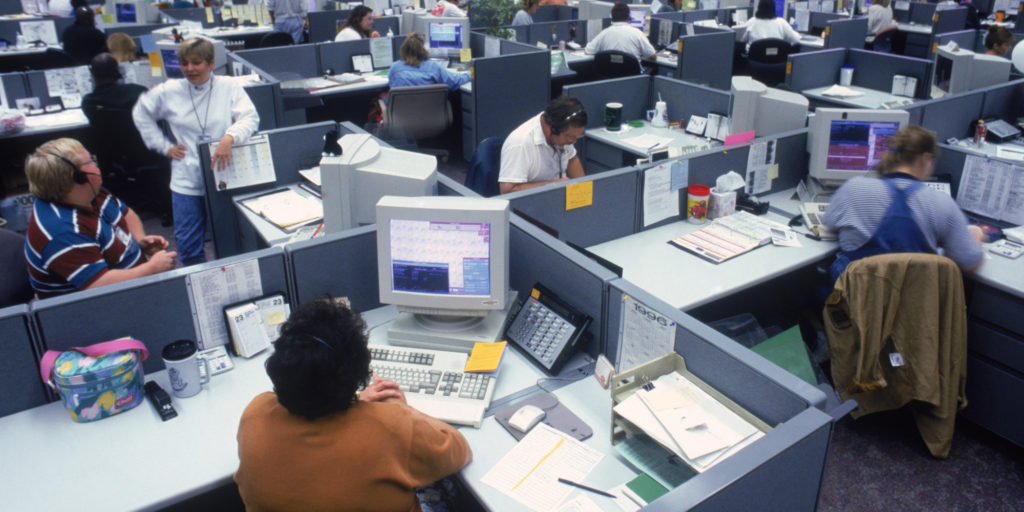Ah, the conference room. What should be one of the most productive areas of your office often turns into an epicenter of boredom, frustration, and dread. “Ugh, another meeting? How long is this one gonna take?” Easy fix, all we have to do is throw a lot of high tech TVs and gadgets in there, right?
Wrong.
What a lot of companies tend to overlook is in fact the most important factor to consider when elevating your conference room to the next level: the people inside it. Although you may just see your conference room as a place where meetings occur, they can serve as the catalysts for office bonding or for the next big idea. If you’re looking to break the monotony of your business, check out these five tips on what it takes to make your conference room the productivity hub of the whole floor.
1. Your Colleagues

Sometimes it’s easy to get the above image in your head when you picture your colleagues, but it’s important to realize that they’re not just workers jammed into cubicles. Each person has their own way of completing projects, writing reports, and communicating around the office, which is why it’s in your best interest to find out what makes them hum. If you find that they’re loving the free coffee, but hating the way memos are sent out, start making some changes. You’ll see it reflected in the conference room in no time.

2. Bring Your Own Device
Company-wide computer setups can certainly be useful, but their success doesn’t always transfer over to the conference room. Supporting a Bring Your Own Device program in the workplace establishes a sense of comfort and familiarity that many of the not-so-tech-savvy will embrace with open arms. Plus, the new association between their favourite device and work might just encourage productivity out of the office as well. Everybody wins!

3. Help Desk Support
Now that you’ve got your coworkers embracing technology a little bit more, here comes the inevitable onset of crashed computers. Fear not! Taking the time to optimize your IT department will go a long way towards increasing productivity, starting with an IT ticketing system. By prioritizing high risk situations and opening communication between employees, you can expect to see a higher level of transparency in the workplace through efficient problem solving.

I’m not talking about the “feng shui” of your conference room here, but rather how the employees of your company need the space to behave. Are people getting frustrated with a constant loss of Wi-Fi when they’re in there? Look into updating your network. Do meetings routinely start ten minutes late because of tangled wires? Try embracing wireless presentation technologies. No matter what changes you make, allow your employees to have a say, and watch the productivity soar.
5. Training

This isn’t exactly what I had in mind, but investing your team in training will serve multiple goals. Now that you’ve discovered what technologies need to be implemented into the conference room, it’s up to you to provide clear and effective documentation so you can be as productive as possible. Additionally, your IT team will be needing to know what they’ll be dealing with, and training them prior to introducing the new tech will only optimize your conference room environment.
The final verdict? While you may find that investing in new and different technologies may ultimately benefit the workplace, improvement needs to begin with the people who will be using them. Keep an ear to the ground to discover what works and what doesn’t for your office, and look for ways to make the conference room a stimulating environment for everyone on your team. Be careful though; after following these tips, they may never want to leave!
